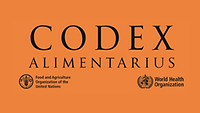FAO/WHO Expert Committee Conducts Review of Foodborne Viruses to Support Codex Guidance Updates

Image credit: jrvalverde via Pixabay
A recent Joint Food and Agriculture Organization of the United Nations (FAO)/World Health Organization (WHO) Expert Meeting on Microbiological Risk Assessment (JEMRA) reviewed scientific developments, data, and evidence to support ongoing work to update the Codex Alimentarius General Principles of Food Hygiene to the Control of Viruses in Foods (CXG-079-2012).
Specifically, the Codex Committee on Food Hygiene (CCFH) requested that JEMRA provide an up-to-date review of foodborne viruses and relevant food commodities of highest public health concern, a review of the analytical methods for relevant enteric viruses in food commodities, and a review of scientific evidence on the potential utility of viral indicators or other indicators of contamination. To meet these charges, JEMRA reviewed the scientific literature on foodborne viruses published since the last JEMRA report on viruses in foods in 2008.
Foodborne Viruses and Foods of Highest Health Concern
The frequency of illness and the clinical severity of disease, as well as virus-food commodity pairs, were ranked in the context of foodborne illness to determine the viruses and foods of highest public health concern. JEMRA identified human norovirus as the leading cause of viral foodborne illness, followed by hepatitis A and hepatitis E viruses. Hepatitis A and hepatitis E were ranked equally to one another, but were placed higher than norovirus in terms of clinical severity. When considering both frequency and severity, the ranking for the viruses with regards to public health concern fell into three groups, as follows:
- Norovirus
- Hepatitis A virus and hepatitis E virus, in descending order
- Rotavirus, sapovirus, enterovirus, astrovirus, and enteric adenovirus, in descending order.
JEMRA also considered commodities from a global perspective, and identified virus-commodity pairs with the highest global public health burden associated with specific viruses, as follows:
- For norovirus: Prepared food, followed by (equally ranked) frozen berries and shellfish
- For hepatitis A: Shellfish, frozen berries, and prepared foods (all of equal rank)
- For hepatitis E: Pork, followed by wild game.
JEMRA acknowledged the lack of sufficient data to conduct a ranking of foods that may be contaminated by astrovirus, sapovirus, enterovirus, enteric adenovirus, and rotavirus, and called for better monitoring and investigation of these foodborne illnesses and associated commodities. Additionally, the experts noted that ranking of virus commodity pairs on a global level is challenging, partially due to regional differences in foods attributed to human foodborne illness.
Although the lack of surveillance data, the potential for asymptomatic shedding, and sparse reporting of foodborne cases pose a major challenge to prevention and control strategies for foodborne viruses, based on the available data and literature, JEMRA concluded the following about norovirus, hepatitis A, and hepatitis E:
- Norovirus: Annually, norovirus is estimated to cause 125 million cases of foodborne illness and 35,000 deaths globally. Norovirus is highly infectious, and outbreaks have been linked to foods with low levels of contamination. Viral contamination can occur across the entire food chain. Severe outcomes, including hospitalization and death, mainly affect children less than five years of age, the elderly, and immunosuppressed individuals who may shed the virus for extended periods of time.
- Hepatitis A: Annually, hepatitis A is estimated to cause 14 million cases of foodborne illness and 28,000 deaths globally, and is a reportable disease in some countries. There are significant regional differences in the proportion of hepatitis A cases that are attributed to food due to endemic prevalence and vaccine utilization. International trade of foods plays an important role in transmission to susceptible populations. Wider compliance with international standards, such as good agricultural practices (GAPs) and good hygiene practices (GHPs), is likely to reduce global transmission.
- Hepatitis E: Unique among foodborne viruses in that it is a zoonotic pathogen with many asymptomatic animal reservoirs, notably swine, hepatitis E has no global estimation of cases attributed to food. However, countries that have investigated the virus more thoroughly have found that their prior estimates are too low by one order of magnitude or more. Genotypes 3 and 4 originating from infected animals are major sources for foodborne cases of hepatitis E, a trend that has been increasing in recent years in some countries. These genotypes cause acute hepatitis which can be severe in individuals with underlying health conditions. They cause chronic hepatitis leading to cirrhosis and liver damage in people with immunocompromised conditions, and are associated with a wide range of neurological aftereffects. Undercooked pig products, like liver or raw sausage containing liver or blood, as well as liver pâté, are the main foods contaminated by hepatitis E virus.
Analytical Methods and Indicators for Foodborne Viruses
Since the 2008 JEMRA report on viruses in foods, international and national standard methods have been developed and validated for detection and quantification of human norovirus and hepatitis A virus in foods. The methods have been implemented in various countries.
International Organization for Standardization (ISO) methods ISO-15216-1:2017 and ISO-15216-2:2019 are widely used for the detection of norovirus and hepatitis A virus in various commodities, and serve as a benchmark for the validation of new methods. Matrices included in the ISO methods are, for example, leafy greens, soft fruits, and shellfish. ISO methods for hepatitis E virus detection in meats and meat products are in development.
Aside from ISO methods, some national methods have been validated and in use by laboratories. Current standardized methods are based on detection of viral nucleic acid, which does not necessarily indicate infectivity. These methods can be limited by several factors (e.g., the complexity of food composition and low levels of contamination). The most notable challenges to current methods include ensuring accurate interpretation, application to other viruses and/or matrices, integration of sequencing technologies, and implementation in low resource countries. JEMRA called for the sharing of laboratory and epidemiological data nationally, regionally, and internationally to improve the understanding and control of foodborne viruses.
A variety of indicators for viral contamination have been investigated, including bacteria, bacteriophages, and plant and animal viruses. At present, these indicators have been studied mostly in environmental waters and shellfish, with variable utility. Additional research is required to determine if there is an appropriate viral indicator for use in other commodities associated with foodborne virus contamination.
Needs Assessment and Data Gaps
JEMRA underlined the need for infectivity assays for wild-type viruses that are relative to detection. Despite the existence of multiple experimental approaches, there is still no definitive means to differentiate infectious from noninfectious viruses using molecular amplification. Human norovirus and hepatitis E virus in vitro propagation models have been developed but are not yet suitable for routine use.
JEMRA recommends that member countries consider building their capacities to support training and adoption of methods for detecting viruses in foods and the environment. This approach has the potential to enhance knowledge on food attribution, support risk analysis, and reduce the burden of viral foodborne disease worldwide. Appropriate global actions will help alleviate the anticipated increase in public health risk from viral foodborne illness arising from population growth, the climate crisis, and globalization of food supply chains.
Looking for a reprint of this article?
From high-res PDFs to custom plaques, order your copy today!






